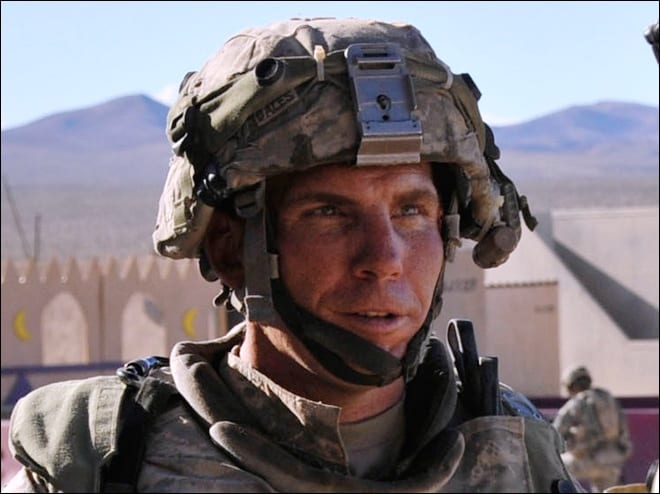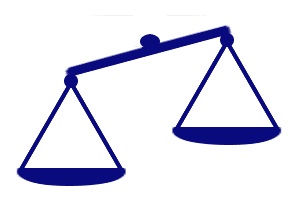This week has been, for the most part, a glorious one. The kids happily went back to school after more than two weeks away, leaving me the house and the dog and my writing to focus on which, frankly, is more than enough. The weather has been cold and crisp and the sunrises and sunsets a riot of color that stop me in my tracks as I walk the dog around the neighborhood and listen to his feet crunch on the stiff grass. I am on Day 7 of green smoothies – not something I generally go in for – and am sleeping better and full of energy from the moment my eyes open in the morning. I am due to have work published in two anthologies this month and am working on a chapter for a third that will hopefully come out later this year.

*sketch above from msn news coverage of the Holmes trial
But life is yin and yang. Balance. Give and take. And it is with a heavy heart that I go through my day listening to the radio programs that feature speakers debating gun policy in the United States and highlight the events of the trial that is beginning for James Holmes, the man who shot moviegoers in Aurora, Colorado last year. I have been moved, more than once, to shut the damn thing off simply to avoid shrieking in frustration. I do believe we are going about this all wrong. I honestly do. As the NPR commentator detailed the preliminary hearing in Colorado on Tuesday, he wondered aloud whether Holmes will plead insanity and, if so, how that will impact the victims. He asked whether the defense attorneys were ‘laying the groundwork’ for evidence that Holmes was not in his right mind when he planned and executed his attack on the movie theater.
I was struck dumb.
I am not certain that it matters what name we give to the affliction that Holmes has. I am fairly certain that most everyone would agree that any individual who could injure another human being purposely is not acting in their highest capacity. Imagine that a decision is made that Holmes was not sane at the time of his attack. What then? Presumably he would be sent to a facility that would treat him for his mental illness in lieu of or until he can serve a jail sentence. Many people would say that he is being let off the hook if this happens. That he is not paying properly for his crimes. There are those out there whose notion of justice includes Holmes dying at the hands of the state.
Because what happened to those innocent moviegoers should not happen to anyone.
It shouldn’t.
But does that mean it should happen to the perpetrator? I know he may not be ‘innocent’ by definition, but what if some horrific past crime against him comes to light? What if he was tortured by his parents or bullied and tormented by classmates or co-workers? It doesn’t justify his actions, by any means, but how far are we willing to go back to see whether we can find a true innocent? And does perpetuating the cycle of harm really solve anything? Does it really end up in “Justice?”
We have a culture of good vs. evil. We have built this notion that we can root out bad spots like bruises on bananas, cut them away, and leave only the good behind. It is that idea that gave us turberculosis sanatoriums, leper colonies and prisons. But until we discovered the causes of TB and leprosy, we were destined to fill up those colonies over and over again because we had no understanding of how to prevent either the disease itself or its transmission. It is the same with prison.
Do we truly understand that each of us has the potential to harm others? We have spent decades studying “criminal masterminds” to determine their motives and have succeeded only in rooting out information that sets these individuals apart even more from the rest of society. We look for the reasons why “that couldn’t happen to me/my kid/my community” in an effort to make ourselves feel safer and look no further.
What if we embarked on a comprehensive system of restorative justice? What if instead of a trial that pits one side against the other everyone involved came together as a cohesive group concerned with coming to a deeper understanding of what happened and its impact on the entire community? What would happen if, instead of vilifying and segregating certain individuals, we took the time to explore their place in the community and their effects on it? What if, instead of directing hatred and anger (both of which are perfectly understandable and justifiable emotions) at James Holmes, we used compassion and engaged in a sincere effort to help him?
Restorative justice moves us away from the notion of revenge or punishment and towards true healing.
But it requires something of us, too. It requires an admission that the entire community is affected when one person harms other members of the community. It requires tacit acceptance that the perpetrator, too, is harmed – often both prior to and during the commission of the act of violence. There has to be a willingness to see the perpetrator as a human being instead of a demon or a ‘bad seed.’ And there has to be a desire for healing, working through complex issues as a group of invested individuals as opposed to a swift sweeping away or walling off.
I know. Pollyanna. And, no, I didn’t lose anyone in the Newtown or Aurora or Virginia Tech mass shootings – or any other mass shooting for that matter. And I sympathize with those who are blinded by rage and pain at the loss of a loved one or the fear that was instilled in them as they prepare to go to the movie theater or lay in a hospital bed recovering from gunshot wounds. I know, beyond the shadow of a doubt, that I would most definitely want to set myself upon James Holmes or the parents of the Newtown shooter and scratch their eyes out, tear their hair, scream in their face until I was spent.
And then, what? Live in a community torn apart and ruled by fear that we may not have locked up all of the bad guys yet? Live in a place that encourages me to protect myself and my stuff at all costs, even if it means taking another human life? Live knowing that this individual may someday come to an understanding of the implications of their actions, but more likely has choked off their own emotions and replaced them with anger or shame? Because here’s the thing: when you cut that brown smear out of your banana, the banana won’t heal. No big deal, given that it’s about to be consumed, but in the real world of human relationships, we need healing. And, unlike a brown spot on a piece of fruit, I don’t believe that it is at all ethical to simply discard a human life like so much trash.
It wasn’t until I saw my molester as a human being that I began to heal my own profound wounds. I spent years in therapy, took lots of different anti-anxiety medications and antidepressants, started yoga, and came to a better place, but the REAL freedom from pain came when I forgave him. Not in person (I don’t honestly even know if he is alive today), but in my heart. That doesn’t mean that I don’t still feel the impact of his behavior in my life and it doesn’t mean I would have the courage to meet him face-to-face if I had the opportunity, although I hope I would. It means that I acknowledge that he made a big mistake and, as a human being, he was entitled to do that. It doesn’t mean that he is absolved of any wrongdoing, especially since I suspect he molested lots of other children as well, but it means that I don’t feel as though I can pass judgment on him and his life. I certainly don’t believe he deserves to be killed for his actions, although I did for many, many years. What I find more compelling is the hope that if any of his victims were ever tempted to perpetuate the cycle of violence he created in their lives, that they are able to stop and be mindful of how it changed them. That they could understand the impact of destructive, angry, behavior on their victims and the community-at-large and ask for help. And I hope that they could find it. That instead of a society that shrinks back from hearing stories of abuse and trauma and stigmatizing or alienating someone who is struggling with the desire to harm others, we can somehow begin to become a society that embraces all of its people and takes responsibility for them in one way or another. That we can come together with a goal of helping everyone be mentally and emotionally healthy and truly acknowlege that their actions have ripples in the community.
Pilot programs that work with restorative justice report significant decreases in the rate of re-offenses. It makes sense. Often, violence is the result of impulsive behaviors coupled with possession of something deadly (getting angry while in a car or happening to have a gun in your pocket when someone pisses you off). If we can educate first-time offenders about what happens to victims of violent crime, make them sit down with the person or family they harmed, with the honest intent of helping them to understand the true implications of their actions, it makes a difference. The other thing that makes a difference is having the honest intent to help the offender. I know that runs counter to much of the emotion that makes us want them to “pay” for their crimes, and when it makes sense, I think that paying monetary restitution is an important piece of the puzzle. To simply lock someone up without offering them education or therapy or truly trying to get to the root of their behavior constitutes placing a higher value on one human life over another and that undermines community. It breaks down trust and collaboration.
We have all made mistakes. Some of us have made enormous mistakes that hurt others immeasurably. The notion of restorative justice allows for the fact that we are all human and uses our humanity as a tool to bring true healing to a community. It involves working through incredibly difficult emotions and, often, cultural or communication barriers but it ultimately sends the message that we are committed to acknowledging challenges and differences and working through them instead of denying them and categorizing them in an effort to make ourselves feel a false sense of superiority and security.





